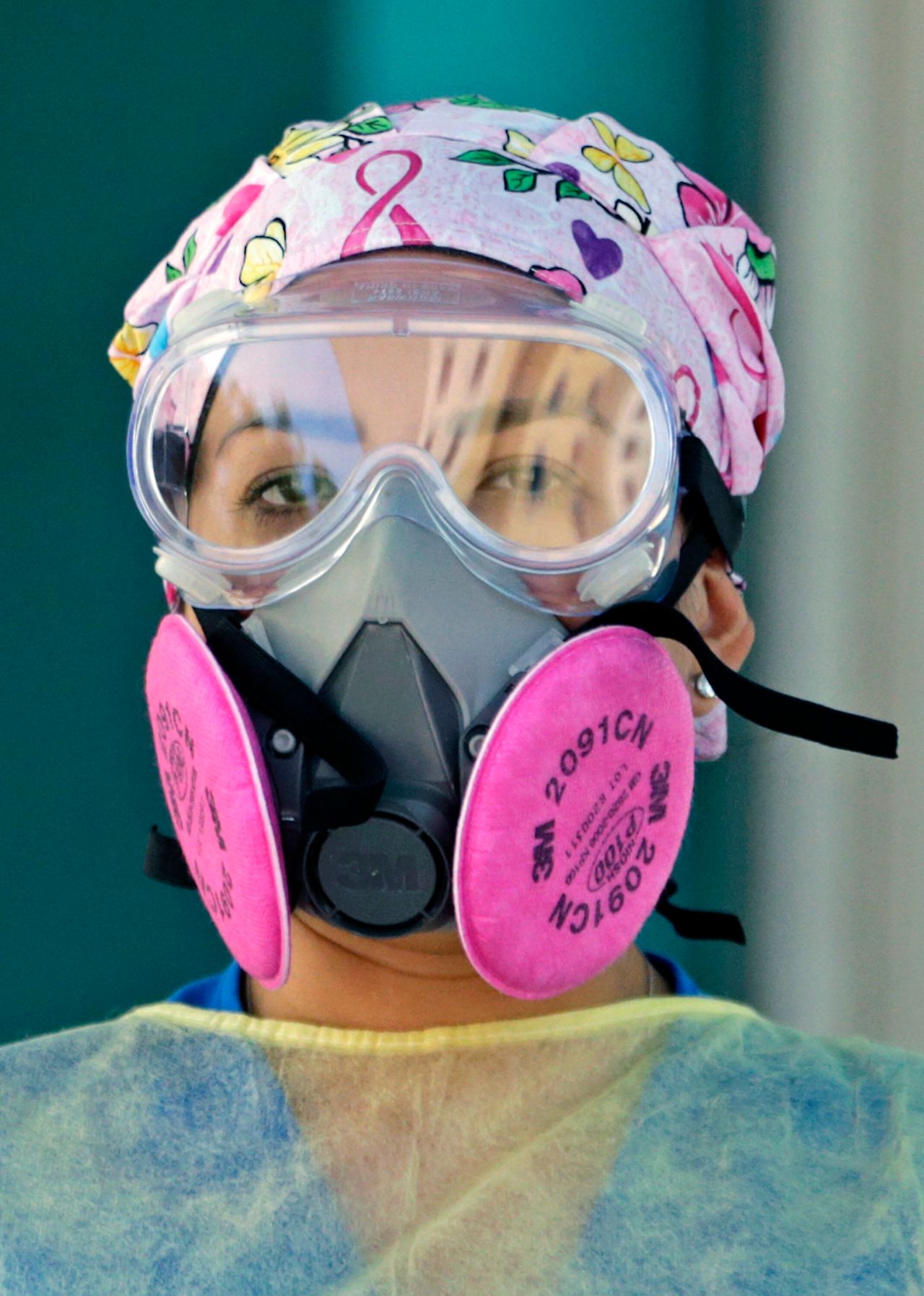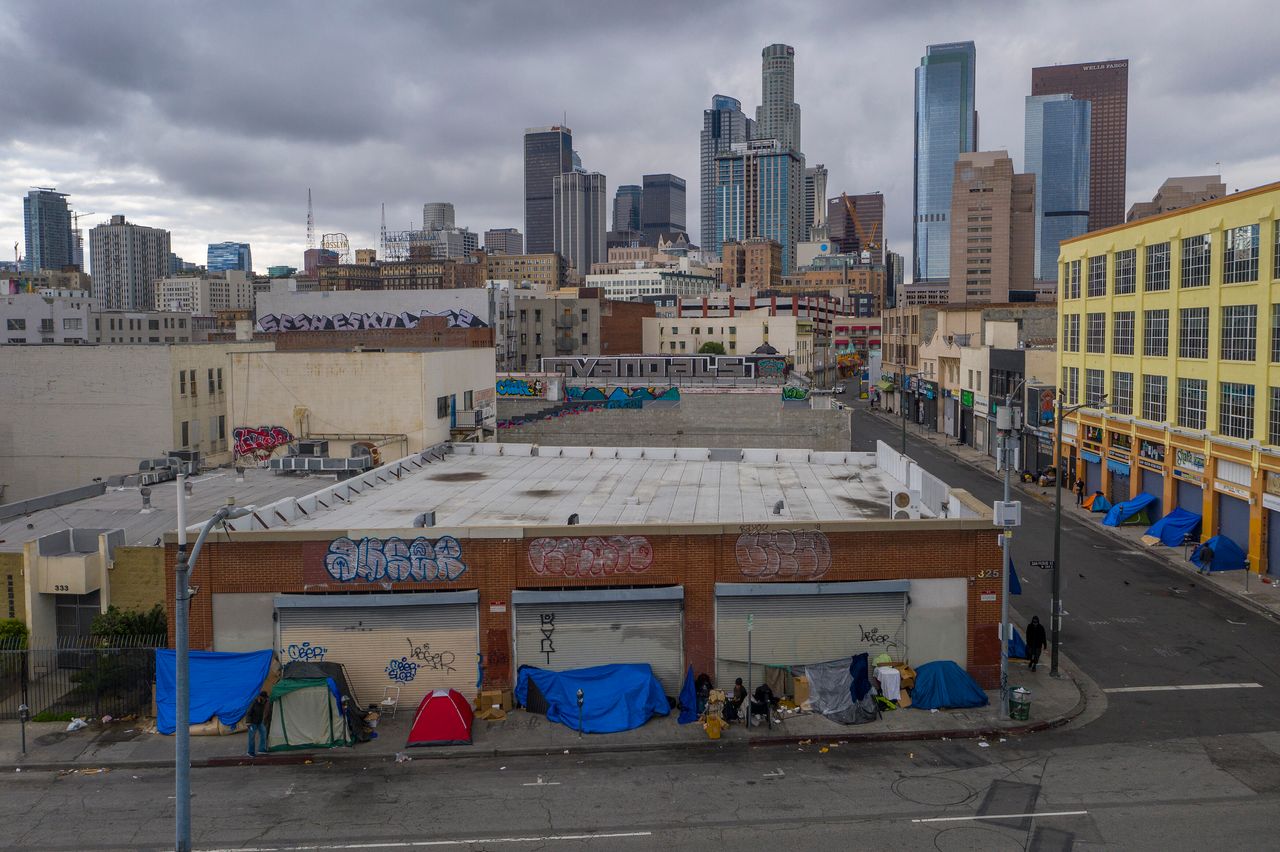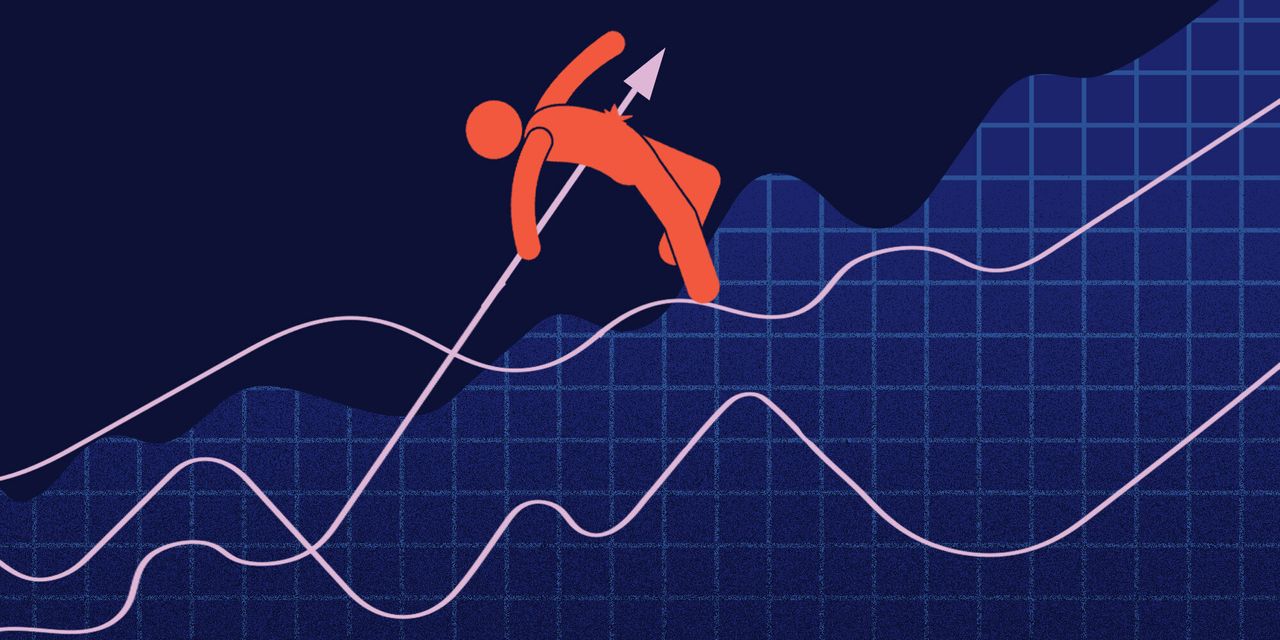The three months since the first American case of COVID-19 was reported have been a never-ending parade of grim statistics: death counts, fatality rates, the steady climb of cases reported and cities locked down.
Starting this week, Americans got a glimpse of a more optimistic set of figures: what it will take for the economy to return to normal.
So far, 31 states have announced plans to allow businesses to reopen and social life to begin to resume. Though they differ in specifics, each state’s strategy is based on quantitative metrics intended to demonstrate that the coronavirus is under control. In Illinois, Gov. J.B. Pritzker wants more than 80% of COVID-19 tests to come back negative. In New York, Gov. Andrew Cuomo will allow cities to begin their phased reopening plans when they have fewer than five deaths per day, 30% of ICU beds free and 30 contact tracers for every 100,000 residents.
These guidelines will take on critical importance as America enters the next stage of the pandemic. City and county officials will use “readiness criteria” to request permission from governors to reopen their economies.
Texas, for example, already allows restaurants, movie theaters and shopping malls to operate as long as they limit customers to 25% of their capacity. Once individual counties reach fewer than five COVID-19 cases, they will be allowed to double the number of customers allowed inside at one time.
All of these metrics, however, have severe shortcomings that could mask the status of the pandemic and encourage future outbreaks. Some states’ plans include vague indicators, like Pennsylvania’s goal of having “enough” coronavirus tests and “robust” contact tracing. Others use measurements that leave out vulnerable groups, such as nursing home residents, prisoners and racial minorities. Though most states have specified thresholds for lifting their stay-at-home orders, few have announced which data points would make them reverse their decisions and reimpose quarantines.
“Single metrics don’t capture the complexity of the problem,” said Bruce Y. Lee, a professor of health policy and management at the City University of New York School of Public Health.
Reopening the economy will require a sophisticated infrastructure to identify new infections and isolate patients who test positive. Even as death rates begin to fall and hospitals increase their treatment capacity, cities still lack basic information regarding who is still being infected with COVID-19 and how. Health care workers are exhausted, the federal government is indifferent and the supply chain for coronavirus tests and personal protective equipment remains fragile.
“The numbers don’t tell you what the system really looks like,” Lee said. “I don’t know of a single state that’s ready to reopen.”
The stakes could not be higher. With stores shut down and budget forecasts cratering, local officials have every reason to paint a rosy picture of the virus’s status in their jurisdictions. States, for their part, have little capacity to double-check the methodologies and assumptions behind the figures local jurisdictions report. If they reopen too soon, it will be weeks before case counts catch up and they realize their mistake — and far too late to keep hospitals from getting overwhelmed.
Howard P. Forman, a public health professor at Yale, said states may be relying on generic statistics about their outbreaks rather than doing the work of truly understanding the risks of ending their quarantines.
“There’s smart reopening and dumb reopening,” Forman said. “We’re all in favor of returning to normal, but it has to be done in a way where we’re monitoring what’s happening and going about it slowly.”

Flattening The Curve: The End Of The Beginning
The first step toward reopening the economy is demonstrating that the initial wave of the pandemic is over. According to the White House’s “Opening Up America Again” guidelines, states should demonstrate a 14-day decline in COVID-19 cases and deaths. Numerous state plans also propose at least two weeks of declining hospitalization rates.
But Elizabeth Carlton, an epidemiologist at the University of Colorado Denver, said case numbers and hospitalization rates don’t always represent what is happening right now in terms of infections.
“If someone gets infected today, they won’t have symptoms for up to five days, then it might take a few more to get a test, then a few more to get their results,” Carlton said. “They may not show up in the hospitalization data for even longer, and the mortality data longer still.”
All disease surveillance systems are imperfect, Carlton said, and COVID-19 is no different. But states still have a wide variation in the quality of their data, and lawmakers may not know what percentage of COVID-19 carriers without symptoms or who have mild symptoms are being captured in the statistics.
“If you look at the last seven days and you see mortality going down, proceed with caution because it may just indicate missing data,” she said.
COVID-19 data is unusually spiky. In Maryland, hospitalizations went from 132 to 192, then down to 142 again in just five days. Numbers can also mask the true extent of the virus in low-income populations, where many are less likely to seek care. Last week, Virginia Gov. Ralph Northam (D) said he would disregard a day of increased cases as long as his state demonstrated an “overall trend” of declining caseloads.
“Testing alone does almost nothing.”
- Howard Forman, Yale public health professor
States have also announced indicators to measure whether their health care systems are ready to handle isolated outbreaks. Washington Mayor Muriel E. Bowser, for example, has said hospitals should be less than 80% full for at least a week. Maryland has already reached its goal of adding 6,000 “surge beds” statewide. The Centers for Disease Control and Prevention even has a calculator for hospitals to determine how much protective equipment they should keep on hand.
But these numerical measures fail to capture the complexities of preparing for months or years in which COVID-19 could reemerge at any time. Lee pointed out that “available bed” statistics don’t include critical context regarding whether beds are in single rooms, shared rooms or hospital corridors. Statewide statistics also lack information on regional variation.
“It’s been proven over and over again that there’s great inequities in health care access in this country,” Lee said. “Some places may be flush with beds while others weren’t able to serve their communities even before the pandemic. We still don’t have reliable information about whether people can actually access care.”
It’s also not clear how long hospitals are obligated to maintain their spare capacity. On Wednesday, Johns Hopkins Bloomberg School of Public Health professor Caitlin Rivers noted that hospitals are now beginning to perform nonessential procedures at the same time that states are considering lifting their stay-at-home orders. Over time, as health care facilities convert their expanded intensive-care capacity back to routine care, they may not be prepared for outbreaks.
Statistical indicators on equipment and staff numbers have the same problems. Even if hospitals are able to obtain weeks’ worth of gowns and gloves, the equipment supply chain continues to be characterized by interruptions, kludges and outright graft. There is no guarantee that equipment will remain available if the virus surges back in several states at once.
“When I talk to people in government right now, every day it’s a different problem,” Forman said. “Something in the supply chain is always breaking down and creating a bottleneck. Until we deal with the larger deficiencies in coordination, leadership and program management, we can’t say we’re ready to handle outbreaks.”

Testing: Quality Over Quantity
Nearly every state with a reopening plan has listed a goal for the number of tests that should be performed per day. In California, it’s 25,000; in Illinois, 10,000. Florida’s “Re-Open Florida Task Force” report suggests reaching the target of 30,000 per day by May 15 and 40,000 by June 15. Public health institutions have taken a similarly quantitative approach, with suggestions for nationwide daily tests ranging from a modest 750,000 to a stratospheric 300 million.
What these numerical targets leave out, however, is that the procedures of COVID-19 testing are nearly as important as their quantity. One issue is how long it takes; many patients are still waiting more than a week to receive results. Access is a problem, too. In much of the country, patients need a referral from their doctor to get a test or have to visit a drive-through testing site. Both of these barriers restrict access to low-income Americans and skew the picture of where the virus is spreading.
Forman said that until daily testing rates dramatically increase, states need to deploy tests strategically. This means carrying out testing at three levels. First, individual: Everyone with COVID-19 symptoms should be able to confirm their condition. Second, hot spots: If a handful of positive cases appear in the same apartment building or workplace, everyone else at the site should be tested immediately. And third, predictive: High-risk sites, such as nursing homes, churches and meatpacking plants, should be tested on a regular basis to catch cases before patients report symptoms.
“You have to do all three,” Forman said. “If you’re only testing people with symptoms, you’re missing all the asymptomatic spreaders.”
A strategic testing regime will also require policy support. Without paid sick leave, people who don’t show symptoms may decide to keep working even after testing positive. Without quarantine locations, patients may stay at home and end up infecting their families, who could then spread the virus to schools or workplaces.
“Testing alone does almost nothing,” Forman said. “It might allow you to get treatment earlier, but telling someone that they’re sick after they’ve already infected their families and friends and people on the subway doesn’t achieve anything.”
So far, none of these support systems is in place. America still has no national plan to increase testing capacity or address the ongoing delays in delivering results. The federal government hasn’t produced any guidance for states on how to distribute tests to maximize their usefulness. Without these crucial supports, Forman said, raw numbers of daily tests only provide a fraction of the information lawmakers need to determine if the virus is under control.

Contact Tracing: Help Wanted
The final prerequisite to reopening the American economy is finding and isolating carriers of COVID-19.
Here, too, lawmakers have announced ambitious numerical targets. On April 22, Maryland Gov. Larry Hogan (R) said that he was launching a surveillance program called “COVID Link” and hiring 1,000 contact tracers. California Gov. Gavin Newsom has announced a partnership with the University of California, Los Angeles, and the University of California, San Francisco, to train 20,000 “disease detectives.”
But just as with case rates and testing regimes, these quantitative metrics fail to capture critical qualitative considerations. Lee pointed out that contact tracing is a skilled position for which few Americans have any training or experience.
“Interviewing someone and figuring out how many people you have to follow up with isn’t easy,” Lee said. “First you have to determine the number of days in which they might have been contagious. Then you have to help them re-create each of those days. What happens if someone says, ‘I remember I talked to a guy with a yellow hat in the market?’ Most people can’t even tell you what they ate yesterday.”
Building a contact-tracing army requires not just people but also coordination and support at every level. This includes IT systems for tracers to share information, and location tracking and text message notifications. Federal agencies may also have to provide dormitories or military barracks to quarantine contacts after they’re identified.
Early hiring efforts indicate that contact-tracing positions will be relatively poorly paid ($17 per hour in Seattle; $57,000 per year in New York City). The states coordinating them are already facing unprecedented budget crises and a nationwide shortfall of 250,000 public health workers. Addressing these challenges won’t just require thousands of new employees; it will take an unprecedented mobilization of skills, training and technology.
“We know that data is helpful, but it’s just one piece of a bigger puzzle.”
- Isaac Bogoch, Toronto General Hospital Research Institute epidemiologist
Even if all that happens, contact tracing itself has limitations. At the height of the South Korean outbreak, officials in Daegu, the city with the largest cluster of cases, said the virus was spreading so quickly that contact tracing had become “meaningless” — by the time their tracing teams identified one COVID-19 carrier, it had already been passed to two others.
Countries with successful contact tracing efforts have databases that link COVID-19 information to a unified national health care system, a stark contrast with America’s fragmented private approach. Other contact-tracing superstars, such as Iceland and New Zealand, are islands: The majority of their new cases come from international travelers, making them easier to track than America’s diffuse epidemic.
There is also the question of enforcement. In China, COVID-19 carriers were monitored for compliance with lockdown orders and punished if they lied about their international travels. Even if Americans were comfortable with such a system (a big if), it would take thousands of staff and sophisticated technology to enforce quarantines.
All of these factors indicate that the country is far from ready to reopen its economy. This week, the Institute for Health Metrics and Evaluation roughly doubled its estimates of the coronavirus death toll, from 72,000 to 134,000, partly to account for states’ hasty reopening plans. On Monday, Columbia University researchers warned governors that reopening could cause “exponential growth” in cases and deaths.
“We know that data is helpful, but it’s just one piece of a bigger puzzle,” said Isaac Bogoch, an epidemiologist at the Toronto General Hospital Research Institute. Reopening safely, he said, will depend on a range of capabilities that are difficult to capture in simple, boiled-down numerical metrics.
“Communication, transparency and honesty with the general public is paramount,” Bogoch said. “People have to know what you’re doing, why you’re doing it and what to expect. Those are critically important components, but we don’t know how to measure them.”
- Stay up to date with our live blog as we cover the COVID-19 pandemic
- What happens if we end social distancing too soon?
- What you need to know about face masks right now
- Will there be a second stimulus check?
- Lost your job due to coronavirus? Here’s what you need to know.
- Why it takes so long to make a coronavirus vaccine
- Parenting during the coronavirus crisis?
- The HuffPost guide to working from home
- What coronavirus questions are on your mind right now? We want to help you find answers.
- Everyone deserves accurate information about COVID-19. Support journalism without a paywall — and keep it free for everyone — by becoming a HuffPost member today.
